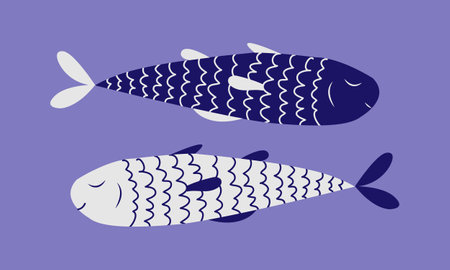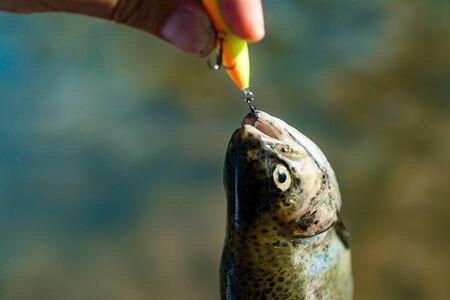Understanding Catch and Release in the UK
For anglers across the UK, catch and release fishing has become more than just a technique—it’s a crucial part of supporting local conservation efforts. But what exactly is catch and release, and why is it gaining so much traction among British fishers? Simply put, catch and release involves carefully returning fish to the water after they’ve been caught, rather than taking them home for the table. This method is practised widely on rivers, lakes, and even along the coastline throughout England, Scotland, Wales, and Northern Ireland. The idea is to give native species—like brown trout, barbel, chub, and grayling—a fighting chance to breed and thrive in their natural habitats. With pressures from habitat loss, pollution, and climate change affecting our waterways, responsible angling has never been more important. Local clubs and fisheries now encourage or even require this approach to help maintain healthy stocks and ensure future generations can enjoy the thrill of landing a lively fish. For many UK anglers, adopting catch and release isn’t just about following rules; it’s about doing their bit for the countryside they cherish.
Native Species Under Threat
When we cast our lines into Britain’s lakes and rivers, we’re not just fishing for sport—we’re interacting with a delicate ecosystem teeming with unique native species. From the iconic Atlantic salmon to the elusive brown trout, British waters are home to a wonderful array of fish that have evolved over centuries. However, these native populations are facing mounting pressures that threaten their survival. Understanding these challenges is crucial if we want to keep our fishing heritage alive and ensure future generations can enjoy the same experiences.
Main Native Fish Species in British Waters
| Species | Habitat | Status |
|---|---|---|
| Atlantic Salmon (Salmo salar) | Rivers and coastal waters | Declining |
| Brown Trout (Salmo trutta) | Lakes, rivers, streams | Widespread but under pressure |
| European Eel (Anguilla anguilla) | Rivers, estuaries, coastal areas | Critically endangered |
| Barbel (Barbus barbus) | Flowing rivers, especially in southern England | Stable but localised declines |
| Dace (Leuciscus leuciscus) | Freshwater rivers and streams | Stable but sensitive to water quality |
The Challenges They Face
- Habitat Loss: Urban development, pollution, and river modification have reduced the natural habitats where these fish thrive.
- Overfishing: Both legal and illegal catches put additional pressure on fragile populations.
- Invasive Species: Non-native species compete for resources and introduce diseases.
- Climate Change: Changing temperatures and weather patterns disrupt breeding cycles and food sources.
- Poor Water Quality: Agricultural runoff and sewage discharge degrade spawning grounds.
Why Conservation Efforts Matter
If we don’t step up now, we risk losing not only individual species but the entire balance of our aquatic environments. Conservation efforts—like catch and release fishing—play a vital role in supporting native fish populations while still letting us enjoy our beloved pastime. By protecting these species today, we’re safeguarding the legacy of British angling for tomorrow.

3. How Catch and Release Supports Conservation
Catching a lively chub on the River Wye or gently releasing a brownie back into a Scottish loch isn’t just about sport—it’s a vital act of conservation for our beloved UK waters. By practising catch and release, anglers are playing a hands-on role in protecting native fish populations, ensuring that these species thrive for generations to come.
Protecting Fish Populations
When we release fish unharmed, we allow them to grow, breed, and maintain healthy numbers in our rivers and lakes. This is especially important for iconic British species like barbel, grayling, and wild trout, many of which face pressure from habitat loss and overfishing. Each fish returned safely is another chance for the population to replenish naturally.
Improving Habitats
Catch and release goes hand-in-hand with broader conservation efforts across the UK. Anglers who respect their catch are often the same folk who notice changes in water quality or spot invasive species early on. Their passion translates into real action—supporting river clean-ups, reporting pollution, and working with local angling clubs to restore habitats. It’s not just about the fish; it’s about the whole ecosystem getting a helping hand.
Sustaining Healthy Waterways
Healthy waterways mean healthy communities, both for wildlife and people. Through responsible angling practices like catch and release, we’re reducing stress on fragile fisheries, allowing natural food webs to flourish, and supporting traditional British landscapes loved by walkers, birdwatchers, and paddlers alike. The ripple effect? More sustainable fishing opportunities now and well into the future.
A Shared Responsibility
Ultimately, catch and release isn’t just a trend—it’s part of our duty as stewards of Britain’s natural heritage. Every careful release is a statement: we value our rivers and lakes enough to protect them. So next time you feel that tug on your line, remember you’re not just enjoying a day out—you’re supporting UK conservation with every cast.
4. Best Practices for Responsible Angling
When it comes to supporting UK conservation, responsible angling is about more than just returning fish to the water. It’s about using the right gear, employing safe handling techniques, and adopting methods that safeguard our native species for generations to come. Let’s take a closer look at how you can make your catch and release fishing truly count for local fish stocks.
Choosing the Right Gear
Your choice of tackle can make a significant difference in the survival rate of released fish. Opting for barbless hooks or crimping barbs on standard hooks minimises injury and makes unhooking much easier. Using strong enough lines helps you land fish quickly, reducing stress and exhaustion. Here’s a handy comparison:
| Gear Type | Conservation Benefit |
|---|---|
| Barbless Hooks | Less tissue damage, easier release |
| Appropriate Line Strength | Shorter fight time, less stress on fish |
| Knotless Landing Nets | Protects scales and slime coat |
Proper Handling Techniques
Handling fish with care is crucial. Always wet your hands before touching fish—this protects their delicate slime coating, which defends against disease. Avoid squeezing or lifting fish by the gills; support them gently under the belly. Try to keep the fish in the water as much as possible, especially when photographing your catch. If you must remove the hook, use long-nosed pliers or a disgorger for swift and safe removal.
Effective Release Methods
A quick and gentle release gives fish the best chance of survival. Hold the fish upright in calm water, allowing it to regain its balance before swimming off under its own steam. If conditions are tough (like very cold or warm water), be extra patient during recovery.
A Few Top Tips from UK Anglers:
- Plan ahead: Have your unhooking tools and camera ready before landing a fish.
- Minimise air exposure: Aim for less than 10 seconds out of water.
- Be mindful of spawning times—avoid disturbing breeding grounds.
The Takeaway
Practising these best techniques isn’t just about following rules—it’s about respecting our fisheries and leaving them thriving for future rods and reels. Every thoughtful action helps preserve the iconic species that make UK angling so special.
5. Angler Stories: Real-World Impact on the Bank
If you’ve spent any time on the banks of British rivers, lakes, or even coastal waters, you’ll know that the real proof of conservation is what we see and feel with our own eyes and hands. Across the UK, anglers have been sharing their stories—small moments that show just how powerful catch and release can be for our beloved native species.
Take the River Wye, for example. Local angler Dave from Herefordshire recalls a time when salmon numbers were worryingly low. “We started practising catch and release about a decade ago,” he shares, “and now I’m seeing more healthy salmon returning each season. There’s no better feeling than watching a strong fish slip back into the current knowing you’re part of its journey.”
On urban stretches like London’s Thames, anglers like Priya have noticed bream and perch populations bouncing back. She says, “Even in the city centre, I’ve seen fish getting bigger every year since more people started releasing their catches. The water feels alive again.” For many, these improvements are as much about the experience as they are about numbers. It’s spotting kingfishers darting past or otters resurfacing—signs that a thriving fish community means a healthier river all round.
In Scotland’s lochs and burns, seasoned fly fisherman Callum recounts how responsible fishing has boosted wild trout stocks. “When we talk to visiting anglers, there’s pride in saying this is a spot where you can land a cracking wild brown trout—then let it go to fight another day. We see more fry in spring and better catches each year.”
These anecdotes aren’t just feel-good tales; they’re proof that catch and release works when backed by care and proper technique. The ripple effect is clear—from improving fish stocks to supporting other wildlife that depends on robust aquatic ecosystems.
If you chat with anglers at your local swim or tackle shop, you’ll hear similar stories up and down the country. Each released fish is a small act of stewardship, helping ensure that future generations can enjoy Britain’s legendary fishing for years to come.
6. Getting Involved: Local Groups and Conservation Projects
If you’re passionate about keeping our British waters healthy and teeming with life, there’s no better way than rolling up your sleeves and getting involved with local conservation efforts. Whether you’re a seasoned angler or just starting out, joining forces with UK conservation organisations can truly make a difference for native species.
Partnering with Conservation Organisations
Across the UK, groups like the Angling Trust, Wild Trout Trust, and Rivers Trust are always on the lookout for enthusiastic anglers to support their initiatives. These organisations run everything from river clean-up days to habitat restoration projects, offering plenty of hands-on ways to help protect our fisheries. Signing up as a member or volunteering at events is a brilliant way to connect with like-minded people who care about the future of our waterways.
Citizen Science: Helping Monitor Our Fish Stocks
Many conservation groups rely on anglers’ observations to monitor fish populations and water quality. Through citizen science projects, you can record catch data, report sightings of invasive species, or take part in fish tagging schemes. Your fishing sessions become more than just leisure—they turn into valuable scientific contributions that guide future conservation work right here in Britain.
Making an Impact on Your Home Waters
Sometimes, helping starts right at your favourite local swim. Organise a litter pick with your angling club, join a riverbank planting day, or simply spread the word about sustainable catch and release practices. Every little action adds up, ensuring that our cherished rivers, lakes, and canals remain vibrant for generations of anglers to come. By teaming up with others in your area, you’ll not only enhance your own fishing experience but also safeguard the unique biodiversity of our native waters.

